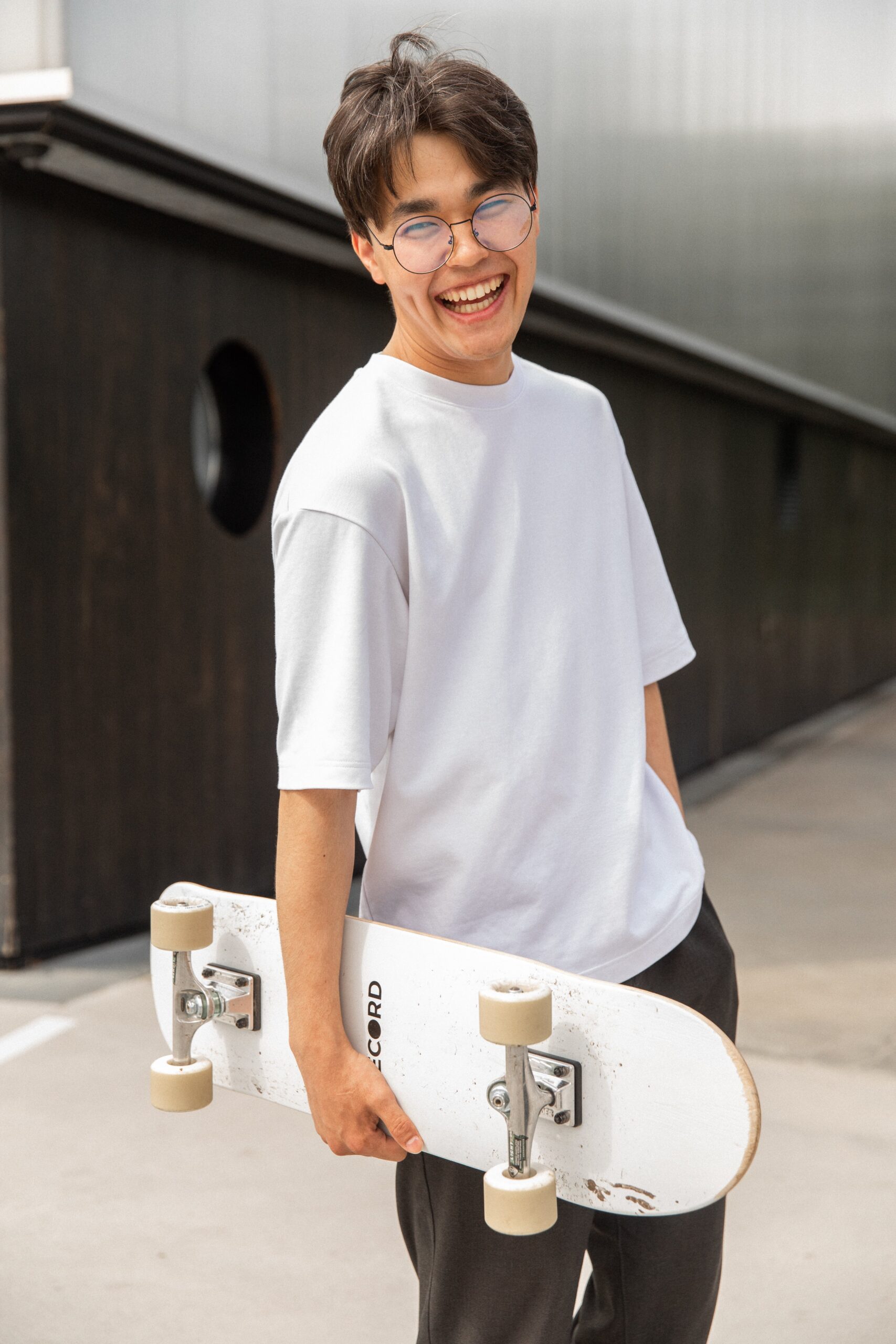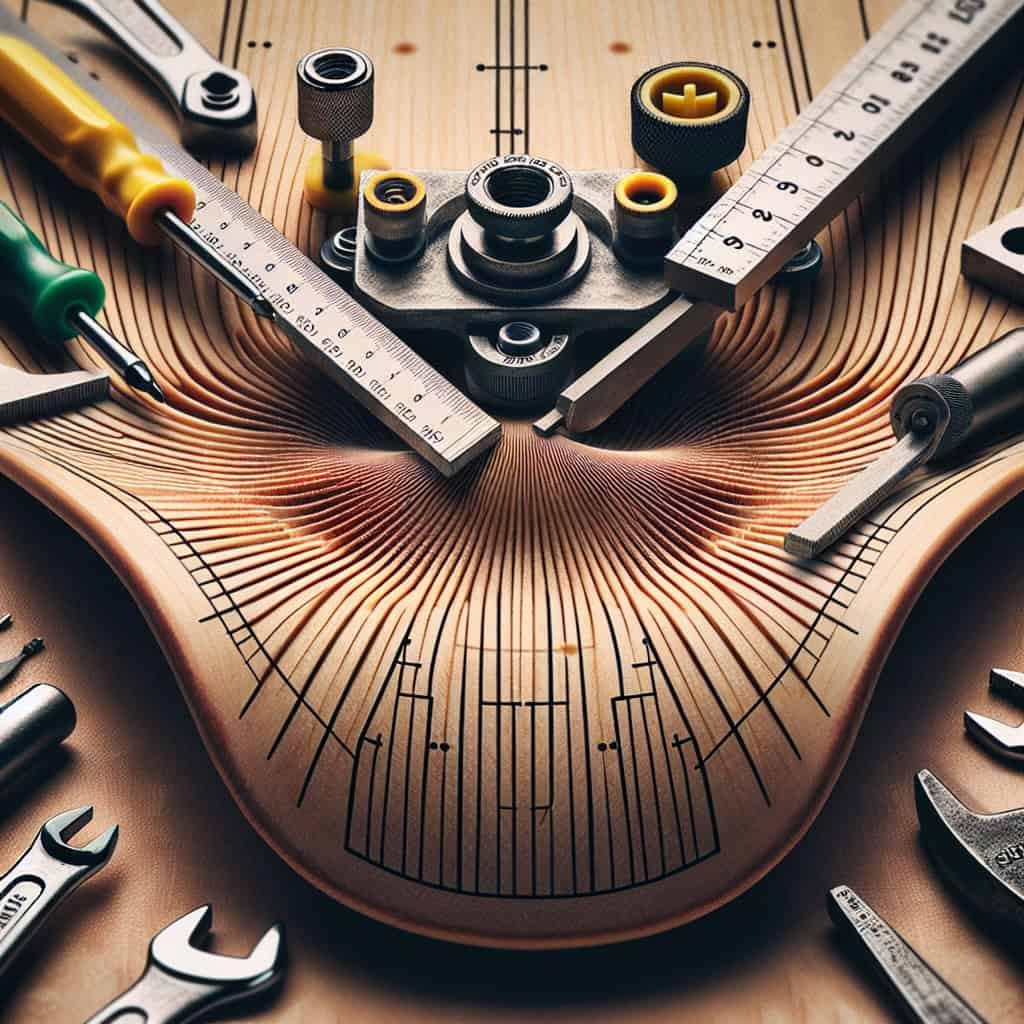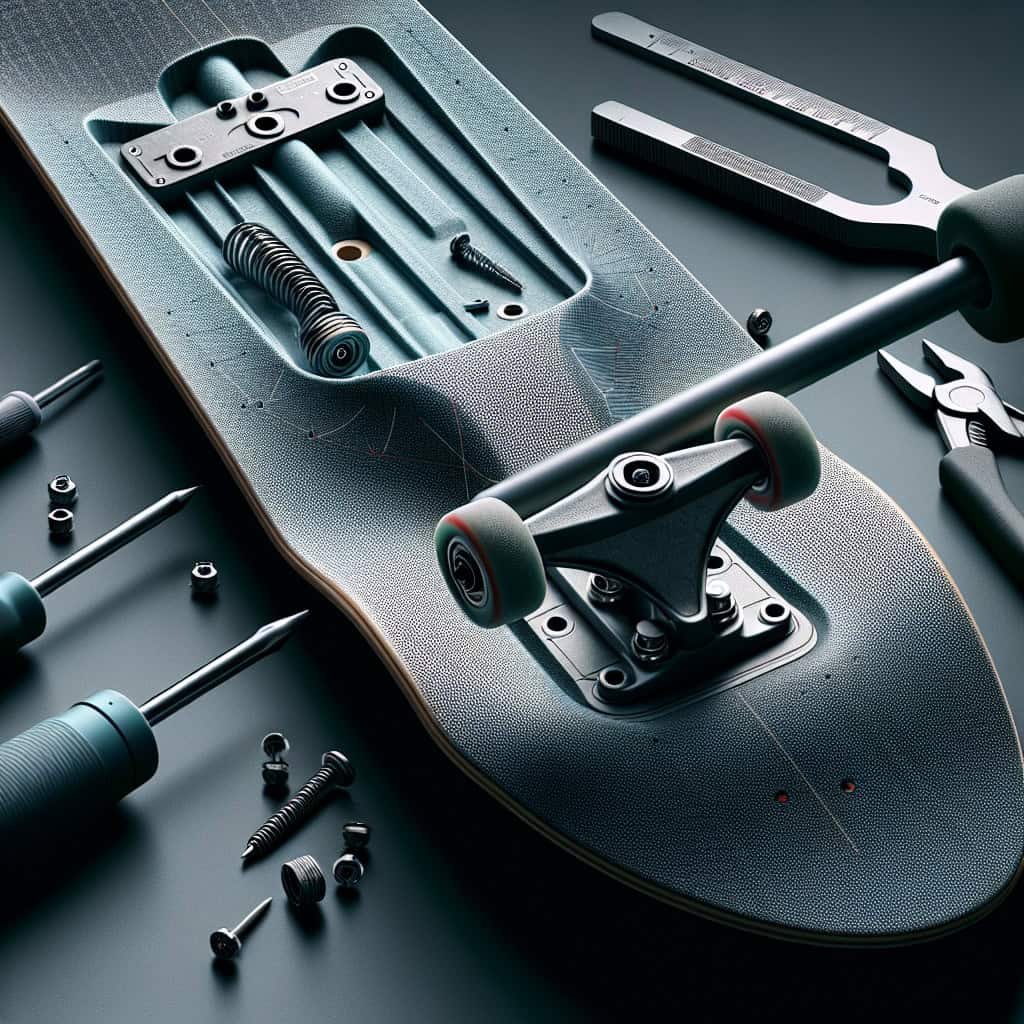If you’re an avid skateboarder eager to enhance your control on the board, adjusting your skateboard deck concave could be the solution you’re looking for. By modifying the shape of the concave, you can fine-tune your riding experience and achieve better control over your skateboard. In this article, we’ll explore different methods and tips on how to adjust your skateboard deck concave for maximum control, allowing you to take your skateboarding skills to new heights. So let’s dive into the world of skateboard adjustments and unlock the key to mastering your ride.
Understanding Deck Concave
Deck concave refers to the curve or shape of the top surface of a skateboard deck. It plays a crucial role in determining how a skateboard feels and performs. The concave shape is created during the manufacturing process, and it affects the control, stability, and overall riding experience.
Definition of Skateboard Deck Concave
Skateboard deck concave refers to the curvature of the top surface of the skateboard deck. It is measured by the depth of the curve from the center of the deck to the edges. The concave shape can vary from board to board, with some having a deeper and more pronounced curve, while others have a milder concave.
Types of Skateboard Deck Concave
There are several types of skateboard deck concave, each offering a different riding experience. Some common types include:
Radial Concave: This type of concave has a smooth, continuous curve from the nose to the tail, with no flat spots in between. It offers a consistent feel and is popular among skaters who prefer a balanced and stable board.
Progressive Concave: Progressive concave features a more aggressive curve that is steeper towards the nose and tail, but mellows out towards the center. This type of concave provides extra control for technical tricks and maneuvers.
W Concave: W concave has a distinctive ‘W’ shape that provides additional support and stability for your feet. It is popular among downhill and freeride skaters who require precise foot placement and maximum control at high speeds.
Convex: Unlike concave shapes, convex decks have a curvature that is opposite to concave. Convex decks have a slight upward curve, which can provide a unique feel and allow for quick turns and responsive movements.
Flat: Flat concave, as the name suggests, has little to no curve on the deck surface. It offers a more stable and predictable ride, making it suitable for cruising and beginners who prioritize comfort over technical tricks.
Understanding the different types of concave can help you choose the right deck for your riding style and preferences.
Importance of Adjusting Deck Concave
While skateboard decks come with predefined concave shapes, adjusting the deck concave can offer several benefits for skateboarders.
Enhanced Board Control
Adjusting the deck concave can greatly enhance your board control, allowing for more precise movements and maneuvers. By finding the right concave shape that complements your riding style, you can improve your ability to perform tricks, maintain stability, and maintain control over your board.
Improved Stability
Another important reason to adjust your deck concave is to improve stability. A well-suited concave shape can provide better foot support and increase stability during high-speed rides or when landing tricks. The right concave can help you stay in control and reduce the risk of slipping or losing your balance.
Personalized Riding Experience
Every skater has their unique riding style and preferences. By adjusting your deck concave, you can create a personalized riding experience that caters to your specific needs. Whether you prefer a mellow, comfortable ride or a more aggressive and responsive feel, adjusting the concave can help you achieve the desired experience.

Tools Needed for Deck Concave Adjustment
Adjusting the deck concave requires a few essential tools. Make sure you have the following items before attempting any adjustments:
Skateboard Deck
Of course, you will need a skateboard deck itself to adjust the concave. Choose a deck that suits your riding style and preferences.
Grip Tape
Grip tape is the textured adhesive material that covers the top surface of your skateboard deck. It provides traction and grip for your feet. You will need to remove and reapply the grip tape during the concave adjustment process.
Skate Tool or Wrench
A skate tool or wrench is necessary to remove and tighten the bolts that hold the trucks to the deck. It allows you to disassemble and reassemble the skateboard components easily.
Heat Gun or Hair Dryer
A heat gun or hairdryer is used to soften the grip tape adhesive. Heating the grip tape makes it easier to remove and reapply during the concave adjustment process.
By having these tools ready, you will be well-equipped to make the necessary adjustments to your deck concave.
Step-by-Step Guide: Adjusting Deck Concave
Now that you have the required tools, let’s go through the step-by-step process of adjusting your deck concave. It’s important to follow these instructions carefully to avoid damaging your skateboard.
Removing Grip Tape
Start by removing the grip tape from the deck. Use a heat gun or hairdryer to warm up the grip tape, making it easier to peel off.
Slowly lift one corner of the grip tape and gently peel it back, pulling it away from the deck. Continue peeling the grip tape until it is completely removed.
Take your time while removing the grip tape to avoid damaging the deck or ripping the grip tape.
Applying Heat to Deck
Once the grip tape is removed, use the heat gun or hairdryer to warm up the skateboard deck surface. Apply heat evenly across the entire deck area.
Heating the deck will loosen the glue used during the manufacturing process, making it easier to shape the concave.
Shaping the Concave
While the deck is still warm, use your hands and fingers to shape the desired concave. You can press or mold the deck surface to create the curvature that suits your riding style.
Experiment with different pressure points and shaping techniques until you achieve the desired concave shape. Take your time to make small adjustments and check the feel of the deck.
Reapplying Grip Tape
Once you are satisfied with the new concave shape, it’s time to reapply the grip tape. Make sure the deck surface is clean and free from any dust or debris.
Start by peeling back a small section of the grip tape backing. Align this corner with one end of the deck and carefully lay it down, smoothing out any wrinkles or air bubbles.
Continue peeling back the backing and pressing down the grip tape while slowly moving along the length of the deck. Use your hand or a grip tape roller to ensure a firm adhesion.
Trim off the excess grip tape using a sharp utility knife or razor blade. Be careful not to cut too close to the edge to avoid damaging the grip tape or the deck.
By following these steps, you can adjust the deck concave to suit your preferences and enhance your overall skateboarding experience.

Alternative Method: Using De-lamination
Apart from shaping the concave through heat and pressure, another method to adjust the deck concave is by using de-lamination. De-lamination involves carefully removing layers of the skateboard deck to create a new concave shape.
What is De-lamination?
De-lamination is the process of separating different layers of the skateboard deck. Skateboards are made up of multiple layers of wood veneers glued together, and de-lamination allows you to remove layers selectively.
Benefits of De-laminating
De-laminating the deck provides greater flexibility in adjusting the concave shape. By removing specific layers, you can create a more customized shape that suits your preferences. De-lamination also allows you to fine-tune the deck’s weight, response, and flex.
Step-by-Step De-lamination Process
Start by removing the grip tape and carefully inspect the deck for signs of de-lamination. Look for any visible separation or gaps between the layers.
Identify the sections or areas of the deck where you want to adjust the concave. These areas will be targeted for de-lamination.
Use a sharp utility knife or razor blade to cut through the layers of the deck. Start with small incisions and gradually cut through the targeted layers. Take caution not to cut too deep or damage the adjacent layers.
Once the layers are cut, carefully remove the layers using a chisel or similar tool. Slowly pry the layers apart and remove them bit by bit until you achieve the desired concave shape.
After de-laminating the deck, use grip tape to cover the exposed areas and provide traction and grip for your feet.
Keep in mind that de-lamination is a more advanced method of adjusting the deck concave and should be approached with caution. It is recommended to seek guidance from experienced skateboarders or professionals before attempting de-lamination.
Considerations for Beginners
If you are new to skateboarding or adjusting deck concave, there are a few considerations to keep in mind for a safe and effective adjustment.
Seeking Professional Help
If you are unsure about adjusting the deck concave or lack the necessary tools and experience, it is advisable to seek professional help. Skateboard shops or experienced skateboarders can provide guidance and assistance in adjusting the concave to suit your needs.
Gradual Adjustment
It’s important to make gradual adjustments to the deck concave rather than making drastic changes all at once. Start with small modifications and test the board before making further adjustments. This allows you to maintain control and avoid any potential issues or discomfort.
Safety Precautions
When working with heat guns, hairdryers, or sharp tools, always prioritize safety. Follow the manufacturer’s instructions for proper use of any tools and ensure you are wearing protective equipment such as gloves and safety glasses. Avoid applying excessive heat or force to prevent damage to the deck and potential injury.

Exploring Different Concave Techniques
Skateboard decks offer various concave techniques, each catering to different riding styles and preferences. Understanding these techniques can help you choose the right deck for your needs.
Radial
Radial concave features a smooth, continuous curve from the nose to the tail. This type of concave provides a balanced and stable feel, making it suitable for all-around riding styles.
Progressive
Progressive concave has a steeper curve towards the nose and tail, gradually mellowing out towards the center. This concave offers enhanced control, especially for technical tricks and maneuvers.
W Concave
W concave has a distinctive ‘W’ shape on the deck surface. It provides extra support and helps lock your feet in place. W concave decks are popular among downhill and freeride skaters who require precise foot placement and maximum control at high speeds.
Convex
Convex decks have a curvature that is the opposite of concave. They feature a slight upward curve, creating a unique riding experience. Convex decks allow for quick turns and responsive movements, making them suitable for carving and cruising.
Flat
Flat concave has little to no curve on the deck surface. It offers a stable and predictable ride, making it suitable for cruising and beginners who prioritize comfort over technical tricks.
Each of these concave techniques provides a different feel and performance. Experimenting with different concave types can help you find the one that suits your riding style and preferences best.
Customization Options
In addition to adjusting the deck concave, there are other customization options to further enhance your skateboarding experience.
Choosing the Right Deck Shape
Skateboard decks come in various shapes, such as traditional popsicle shapes, cruiser shapes, and longboard shapes. Consider your riding style and preferences when choosing the deck shape. For technical tricks and street skating, traditional popsicle shapes are popular, while cruiser shapes are suitable for cruising and transportation.
Adding Riser Pads
Riser pads are small, rubber or plastic pads that fit between the skateboard trucks and deck. They provide additional clearance between the wheels and deck, reducing the risk of wheel bite. Riser pads can help customize the ride height and improve the overall performance of your skateboard.
Different Grip Tape Patterns
Grip tape patterns can add a personal touch and improve grip on your skateboard. From custom designs to different color options, there are endless possibilities to choose from. Explore different grip tape patterns and find the one that suits your style and preferences.

Maintaining Deck Concave
To ensure optimal performance and longevity of your deck concave, it’s important to follow proper maintenance practices.
Periodic Inspection
Regularly inspect your skateboard deck for any signs of wear, de-lamination, or damage. Look for cracks, separation between layers, or changes in the concave shape. Address any issues promptly to avoid compromising the performance and safety of your skateboard.
Replacing Worn-out Decks
Skateboard decks are subject to wear and tear over time. If you notice significant wear, deep cracks, or a loss of the desired concave shape, it may be time to replace your deck. Riding on a worn-out or damaged deck can affect your control and increase the risk of accidents.
Avoiding Excessive Weight
Excessive weight on the skateboard deck can cause it to lose its intended concave shape over time. Avoid carrying heavy loads or jumping on the deck unnecessarily. Excessive weight can lead to deck sagging and reduced performance.
By following these maintenance tips, you can prolong the lifespan of your deck concave and enjoy optimal performance for an extended period.
Conclusion
Adjusting the deck concave of your skateboard is a significant customization option that can greatly improve your control, stability, and riding experience. The process requires careful consideration, the right tools, and attention to detail. Whether you choose to shape the concave using heat and pressure or explore de-lamination methods, always prioritize safety and seek professional help if needed. With the right concave shape tailored to your preferences, you can unlock your full skateboarding potential and enjoy the thrill of the ride.

